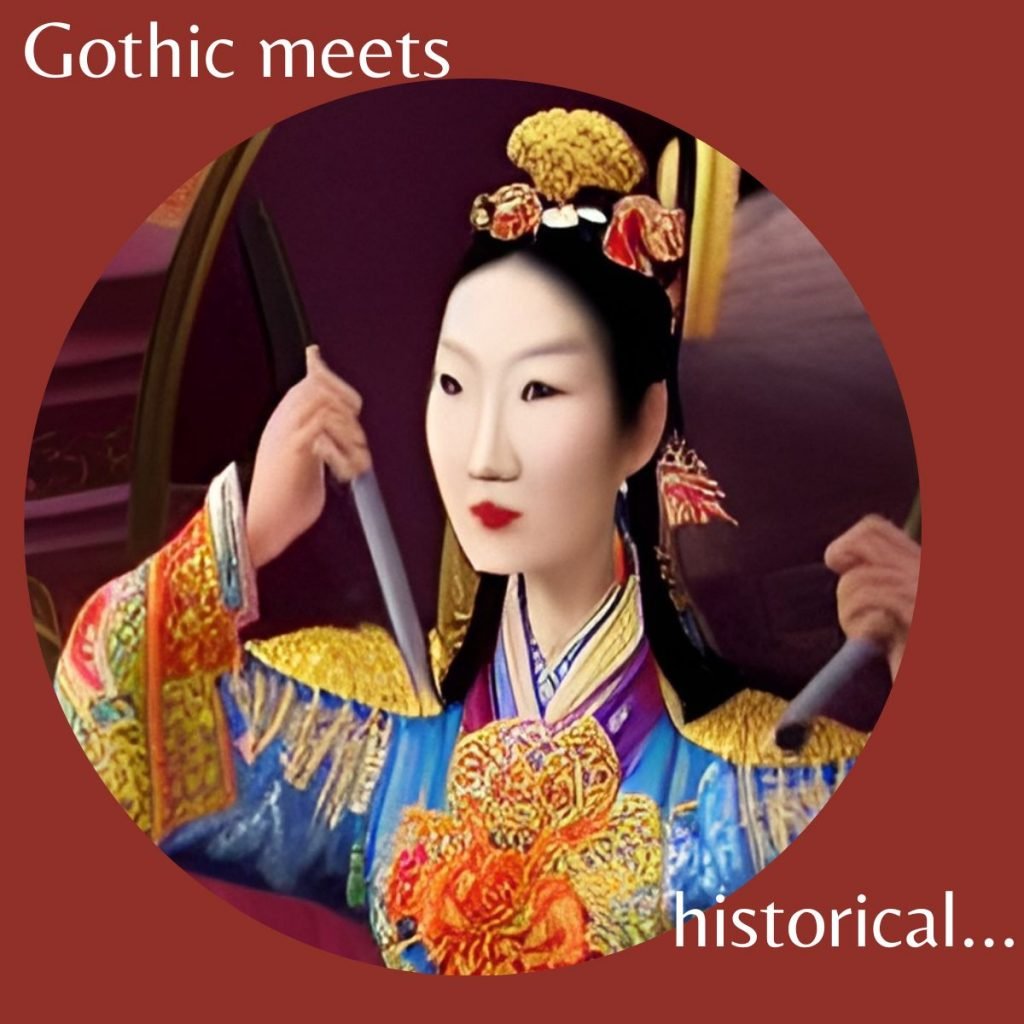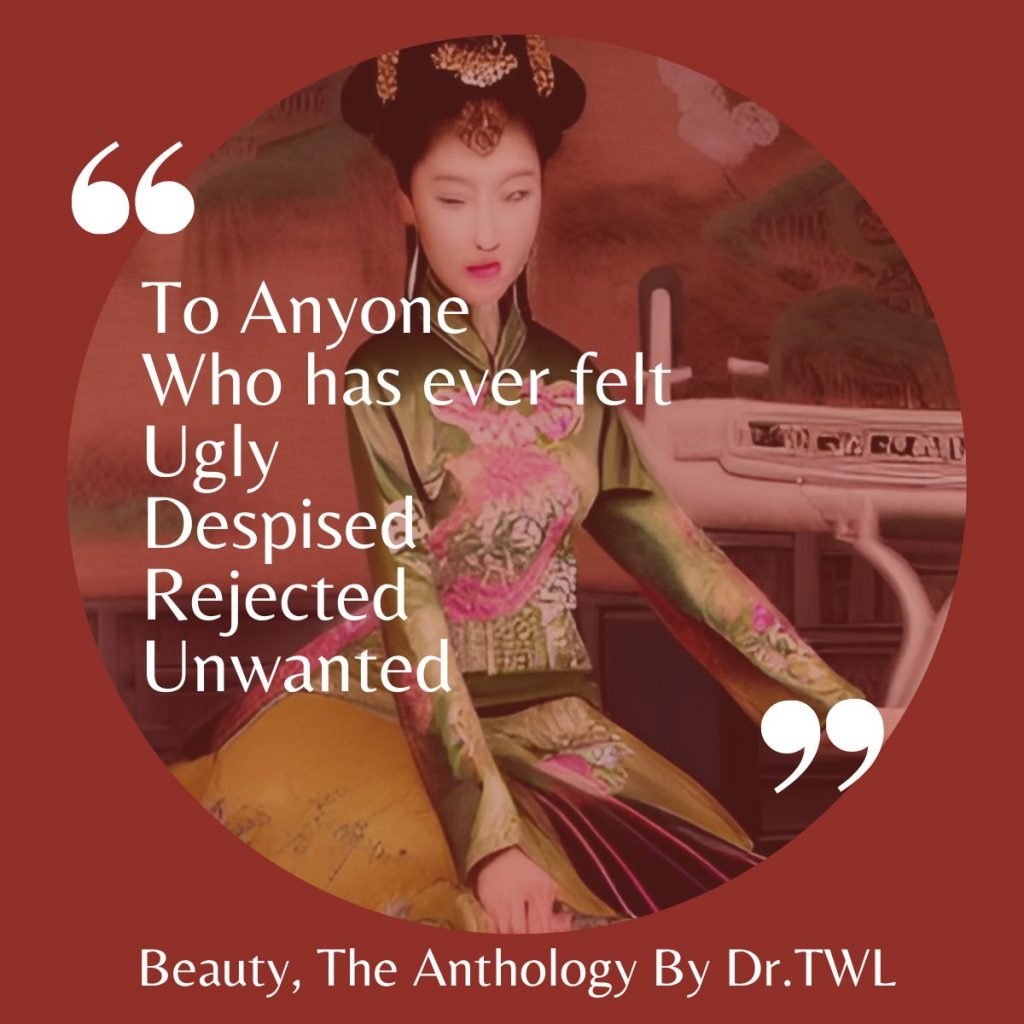Podcast: Play in new window | Download
Subscribe: Apple Podcasts | Spotify | RSS
Ep 87: The Faces of Intelligent Beauty in Ancient China: Shangguan Wan’er

In the Tang Dynasty, Shangguan Wan’er, was an imperial consort also described as the female prime minister. Wan’er was groomed by Empress Wu Zetian, who is recognised as the only female sovereign in the history of China. Historical writings state that Wan’er’s grandfather Shangguan Yi was a high ranking official during the reign of Emperor Gaozong whose second wife Empress Wu Ze Tian later conspired to have him put to death. After Yi passed away, Wan’er and her mother Lady Zeng were spared but were banished to become palace slaves.
As Wan’er grew up, however, it became clear that she had a remarkable talent for writing. She composed poems and essays so beautiful she caught the attention of the Empress Wu, who summoned her with a test. Wan’er was asked to compose an essay on a given theme right in front of her, and she did so. In fact marvelously well. So the Empress appointed 13-year-old Wan’er as her personal secretary, taking on the responsibility of writing most of the Imperial decrees, accepting proposals and petitions of court officials.
Intelligent Beauty – Wan’er was also said to have a beautiful face
However, it was her writing style that was known to be exceptionally beautiful. When the Emperor died, the now Empress Dowager Wu declared herself Emperor, establishing her own Zhou Dynasty. It was during this time that Wan’er cemented her position as leading advisor. Her talent for composing edicts, political and cultural works, renowned throughout the kingdom.
However, Wan’er was said to have once crossed the Empress severely, so much so that she was supposed to be given the death penalty for disobeying her. Yet, because of her great talent, the Empress would not bear to. Instead, she decides to brandish Wan’er’s face with a tattoo, a penalty known in ancient chinese history as Mo. Literally translating into “ink”.
Ancient China’s five punishments
Mo was the lightest of them all, where the offender would be tattooed on the face or forehead with indelible ink. The others were Yi, where the offender’s nose would be amputated without an anaesthetic. Yue, which was when either foot, or both, were amputated. Gong, when the male offender would be castrated and sentenced to become a eunuch in the Imperial palace. And finally Da Pi, which was death by torture. Offenders would be subject to horrific methods of execution. For example, quartering which literally refers to what it does- cutting the body into 4 pieces. The most severe of all, Si Ma Fen Shi, which means tearing of the body by 4 horses attached to chariots.
It is quite horrible indeed. But there is a purpose for our discussion today. Going back to Wan’er, ink torture was, well almost regarded as the de facto death penalty for women who offended the Empress Wu. Almost, because we know that Wan’er was in fact supposed to be sentenced to death, but only because of her talent in writing was she considered valuable to Empress Wu and her life was spared. But even in ancient times, women were regarded to have valued their appearance more than men, so punishment by ink was a form of psychological torture.
@drteowanlin Introducing Short Stories for Women by Dr.TWL. Beauty, The Talisman is the first in a series of haunting short reads by renowned Asian beauty expert and host of popular beauty podcast Dermatologist Talks: Science of Beauty, Dr Teo Wan Lin. Get ready to be mesmerised by the tales of imperial consorts of ancient China, reimagined to challenge conventional beauty stereotypes. Ghosts, ghouls and spirits taunt the beautiful, uncovering the true face of evil, at the enthralling and captivating pace of an under-60 minute escapade. #amazonshortsreview #shortreads #womensfiction #shortstories #booktok #booktokrecommendations ♬ Exil – Hiboky
What more, to a woman with a beautiful face
It was supposed to ruin her, as an act of disfigurement. However, what Wan’er did subsequently was quite remarkable. She devised to decorate her forehead with plum blossom makeup- Hua Dia, to conceal the ink tattoo. So she tattooed a red plum blossom around her scar, dyeing it red.
In fact, they say the red plum blossom didn’t just cover her scar, it made her look even more beautiful and charming. Then it started trending on Tik Tok, just kidding. It became so popular amongst the palace ladies and the common folk that we know it now as the representative makeup of the Tang Dynasty. This is known as Hongmei Zhuang which means Red Plum Makeup.
The origins of Huadian
It was said to have originated in the Southern dynasty period. Created by Princess Shouyang, the daughter of Emperor Wu of Liu Song (420-479 AD). Legend states that the princess was taking a nap when a plum blossom fell on her forehead and cheeks, leaving beautiful imprints of the petals which stayed for three days.

Another version says that she was a taking a walk in early spring when the flower, blown by the mind, lands on her forehead leaving an indelible mark. Because the princess looked so beautiful with the mark of blossoms on her face, it inspired all to imitate her. Sparking a trend during the Northern and Southern dynasties spanning 420-589 AD.
But it was not until the Tang Dynasty, at least 200 years later, that one intelligent beauty by the name of Shangguan Wan’er, Ancient China’s only ever female prime minister, that we see the revival of this trend. This time, borne out of a cruel punishment, one intended to destroy a woman’s face, a mark of disfigurement not merely branding one as a criminal, but in order that her life would most surely be ruined.
How scars form
Two thousand years later, women still greatly suffer from the psychological distress associated with scars. We have the idea that scars disfigure, they represent imperfection and hence must be ugly. A mark of the unwanted, we think. From a medical perspective, we do realise that people do not consider scars desirable, whether arising out of injury or surgery.
However, the process of the formation scars is an essential part of healing. This is what happens when one has an injury. First, hemmosis, when bleeding is stopped. When you have a cut, your body directs blood cells to begin clumping together. This is in order to protect the wound and prevent further blood loss. They form clots, which turn into scabs as they dry, with the help of blood cells known as platelets. Clots contain a protein known as fibrin. It has the structure of a net in order to keep the clot in place. When the clot successfully forms and the wound stops bleeding, blood vessels then open up. Vasodilation is the process that allows oxygen and nutrients into the wound to accelerate the healing process.

Our skin’s natural ability to heal
The body also cleverly directs a type of immune cell – macrophages – into the wound, which acts like a bodyguard. It fights infection and ensures that repair carries out properly. This is why you see clear fluid around the wound, which is also helping to clean it. Macrophages also produce growth factors that stimulate wound healing. This process of wound healing is part of inflammation. Which is also the part that is what we generally regard as what causes scars to develop. The later stages after inflammation would be growth and rebuilding and strengthening of the scar.
It is in these stages that cells produce collagen and other tissue types. These will initially appear red before developing pigment, a type of scar known as post inflammation hyperpigmentation. Strengthening continues to occurs over months, and even a few years in some cases. During this time, the skin over the original wound becomes as strong as it was before the trauma. Except, that there may be stretching, puckering and pigmentation. These are all of the features that we attribute to scarring.
Scarring dermatological conditions
I told you all that because we need to realise that being able to heal with a scar is not just an essential physiological process. It is also not one that ought to be taken for granted. There is a genetic condition in dermatology known as epidermolysis bullosa. This is when sufferers have extremely fragile skin that result in blisters in response to minor injury, or even none at all.
Depending on the subtype, symptoms can be more or less severe. In the worst case, recessive dystrophic epidermolysis bullosa causes affected infants to be born with widespread blistering and areas of missing skin, because of the trauma occurring during the birth itself. These blisters can cover the whole body and also the mucus membranes, such as the mouth and the digestive tract. In this case, excessive trauma and inflammation caused by the missing proteins result in abnormal scarring. This will eventually disable the individual.

Abnormal scarring
Scarring in the mouth and esophagus affects chewing and swallowing. This can eventually lead to chronic malnutrition and even the inability to feed, requiring tube feeding. Because their skin is so fragile, it never really gets to heal. Before an old injury has time to resolve, yet another injury occurs. What happens then is the ongoing scarring that ultimately causes skin between the fingers and toes to fuse together, fingernails and toenails fall off, joints become stuck together, what we term as a contracture so that they become fully disabled.
If you thought that it couldn’t get worse, the nightmare doesn’t end there. The scarring also affects the membranes of the eyes, giving rise to chronic eye inflammation that results in blindness. The fragile, scarred skin of these patients is also particularly vulnerable to a type of skin cancer known as squamous cell cancer. This is a highly aggressive cancer and can be fatal.
Normal, efficient wound healing that results in a pigmented or an indented scar is a privilege that we enjoy as healthy individuals. For patients born with epidermolysis bullosa, what we have is their dream skin. This begins my series on the psychology of ugliness, scars and disfigurements which haunt us like ghosts revisiting from our pasts.
A story of intelligent beauty
Told through the lens of some of Ancient China’s most powerful women. These women are mostly regarded as beautiful. Apart from the few apparently so hideous that they too became famous. They also had exceptional talents, their talents on a disfigured face, regarded as haunted scars, leaving an equally indelible mark on the history of Ancient China.

In Beauty, The Talisman, I begin with a tale of the ugliest empress in all of Chinese history: Momu. A reimagination of the ugly queen who today, we remember as a demon-busting goddess incarnate and, as one equally famous for her ugliness as well as the inventor of the mirror. This short story is the first of Beauty, The Anthology, a collection of 8 short reads available on Amazon Kindle. I created these as stories designed to challenge our perceptions about beauty.
Change your perspective on intelligent beauty
These short stories are designed to be read in a single seating. Whether to accompany you on a short lunch break or on your way home, or even as a bedtime read. Change your perspective on beauty and I promise that you will become more beautiful. Readers and listeners are also invited to share their thoughts and reflections in our community for this special project, one I hope, will change your mind about beauty standards. That’s all for this week, I hope you’ve enjoyed this episode on intelligent beauty, do let me know what you think as well. You can always reach out to me on Instagram or on our podcast website. See you in the next episode.
